The word ‘original’ for an artistic or musical work means that it’s created and produced for the very first time: it is totally new and has never been seen or heard before. A works existence depends on a degree of thought, skill, effort and labour used by its creator but, ‘quality’ is excluded, which is presumably why a sequence of coloured dots can be copyrighted as an artistic work! A painting, drawing, sculpture or piece of music must exist in material form and be ‘fixed’ in a medium or means of expression like canvas, paper, wood, stone for art or on an audio or visual recording, manuscript, and computer/ digital carrier for music. Ideas are not original unless they are expressed by such methods and aren’t protected by copyright law if they are floating around in the mind!
Copying an original work without the creator’s permission, known in law as the ‘author’, is an infringement of that person’s work, as original works are protected by copyright law so that the author of a painting can earn a living by exploiting and selling their original work in an exhibition or online. Some argue that many forms of creative work, particularly in art and music are derived from what has gone before and inspired by or borrowed from previous earlier works. Picasso famously said ‘bad artists copy, good artists steal’! Knowingly copying somebody else’s original work is wrong in today’s world but for various reasons it’s been going on for centuries and forgery, fraud, plagiarism and derivatives have intrigued me for years .
Here are some early art examples of copying – the first two from the renaissance and the others from the renaissance and the nineteenth century respectively:
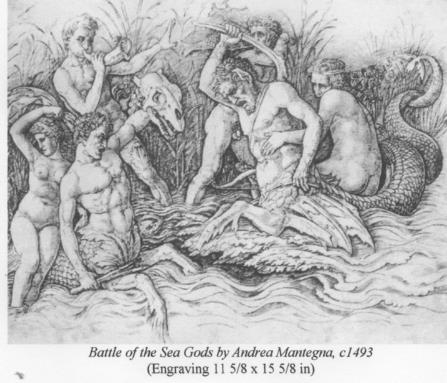
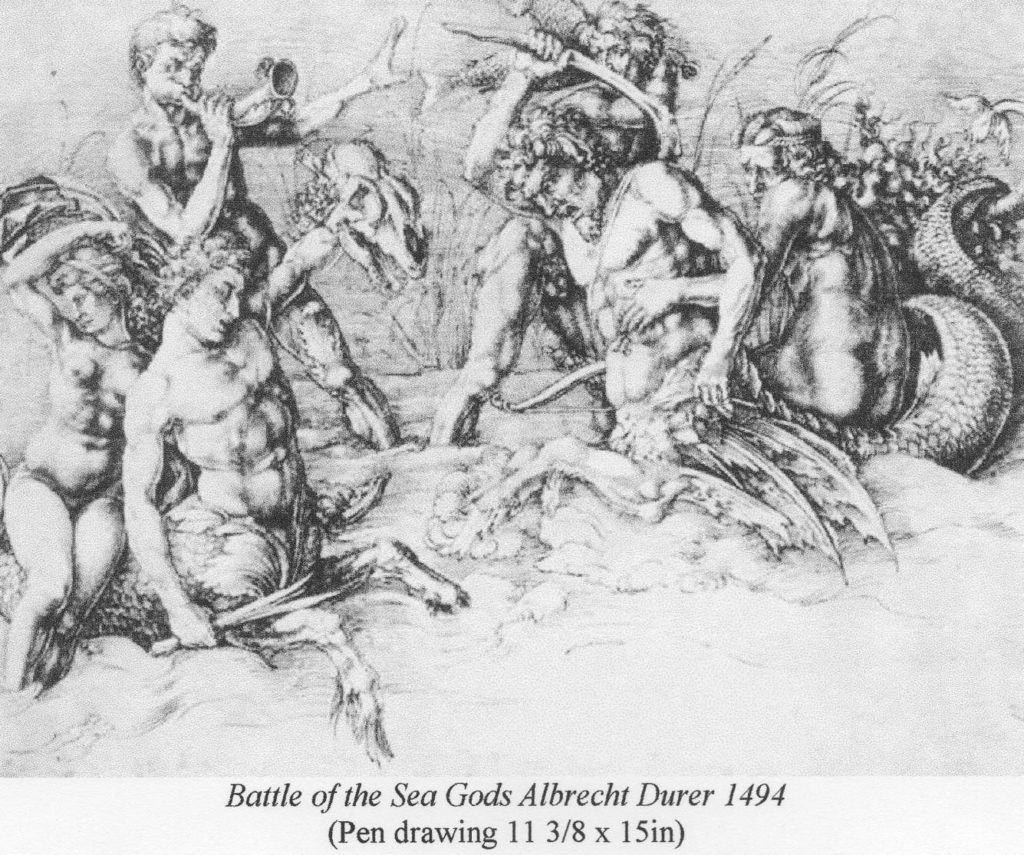
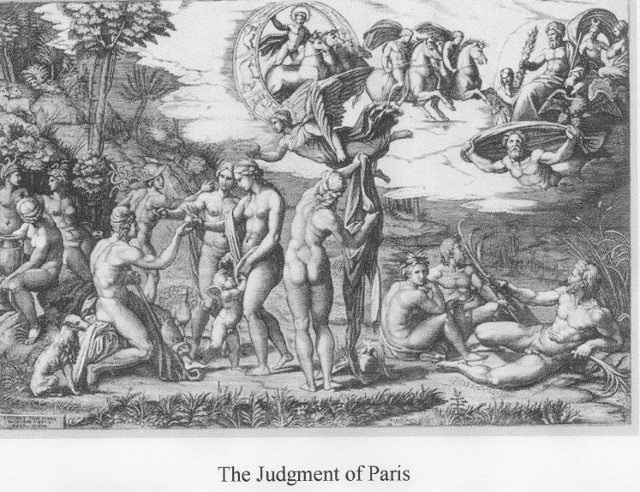
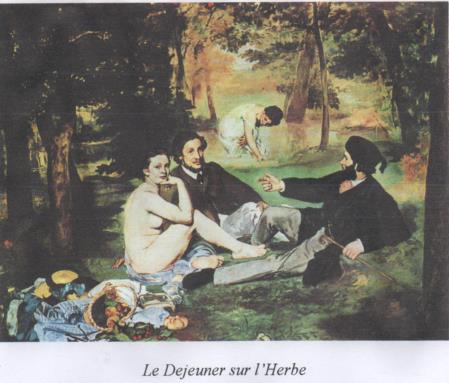
In the Mantegna engraving and Durer pen drawing the pictures are almost identical and in the Manet painting, the composition of the three main figures has been copied from the bottom right corner of the Raphael work. In the renaissance of course it was traditional for apprentices to paint with and for their masters and often make copies of their works too. In the first case there was a known connection between Mantegna and Durer who went to Italy, studied, admired and copied the original engraving. There were no copyright problems with either of these copying examples as laws had not been invented in the renaissance to protect creativity.
As time has passed, the history of art throughout the world shows, in my personal view, that copying has increased and in the west, genuine creative originality, particularly in painting, has faded. It’s true that originators of various art movements such as Monet, Picasso, Kandinsky, Duchamp and others who pioneered art development in the twentieth century were original thinkers and doers but there has been little in recent years that is in any way original whether it be from Damien Hirst, Jeff Koons or anyone else deemed to be the next shocker or sensationalist. Search hard enough and similar such creations can be found.
My choice of genuine inventive painter ‘originals’ whose work I’ve seen at first hand and who simply cannot be categorised include Francis Bacon, Maggie Hambling, Anselm Kiefer, Sidney Nolan, Paula Rego, and Chris Ofili. In music, I’m convinced that originality throughout history in the western world has similarly declined. I would single out the most influential innovators for me personally as Richard Strauss, Igor Stravinsky, Arnold Schoenberg, Freddie Mercury, Kate Bush and some brilliant collaborations, particularly in pop music genres. It’s possible of course to put the case for many creators and I’m sure many readers won’t agree with my choices!
I’m not going to look at all these named individuals but just briefly examine Sidney Nolan (in art) and Kate Bush (in music) as examples. Sidney Nolan was a one off, a poet, thinker and superbly inventive painter who transformed art in Australia with his shifting styles and original themes. “Nolan has pursued his own path. His predominantly figurative style has been an aesthetic refuge for eyes and minds bored by abstraction. His imagination is endlessly questing and his artistic and technical invention perhaps unparalleled.” (Jane Clark 1987). He is most famous for his paintings driven by his emotions based on the life of the Australian bandit Ned Kelly. Here’s a typical example of his unorthodox work, perhaps asking us to figure out for ourselves what is happening at this mine.
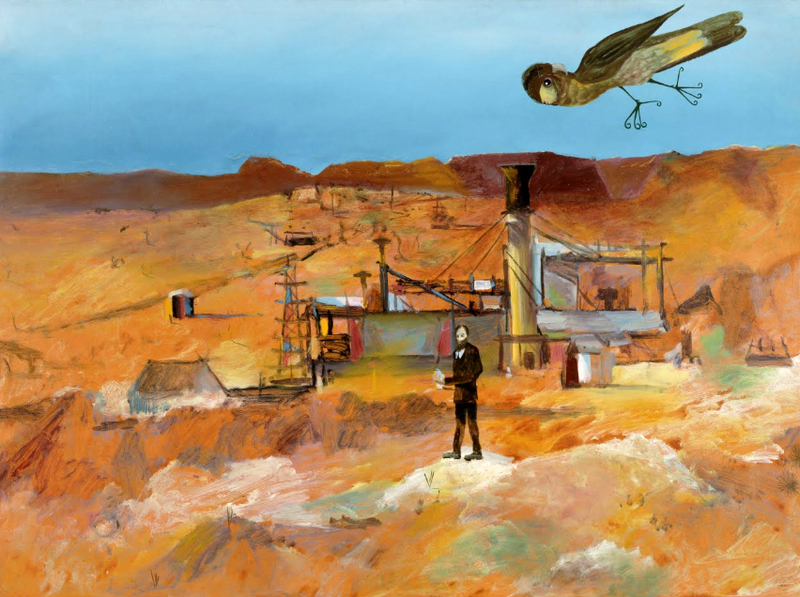
My second choice from the world of pop music is the unmistakable, intensely private, brilliantly distinctive and enigmatic Kate Bush, singing Hammer Horror above. A talented vocalist, songwriter, musician, dancer, actress, producer and director who has not only tightly controlled every aspect of her career but has created a unique combination of instantly recognisable music merging it with both visual and performing arts. She is virtually impossible to copy or emulate due to her unusual vocal range, prodigious songwriting talent and outstanding versatility.
Such staggering works emanating from amazingly gifted creators can leave the average aspiring artist or musician somewhat deflated but occasionally I have a small flicker of inspiration in abstraction which contains some element of originality. This painting, based on the life and music of Richard Strauss, is hopefully unique except for the reference to patterns and shapes in the bottom right hand corner used by the Austrian painter Gustav Klimt whose decorative paintings have been compared to the lush, romantic, ‘decadent’ orchestrations in much of Strauss’s music.

The colours I chose reflect the intense emotions I feel when I listen to many of his operatic works and his famous Four Last Songs.
On this note I’ll finish although I’m sure there will be more on various aspects of these subjects in blogs to come.